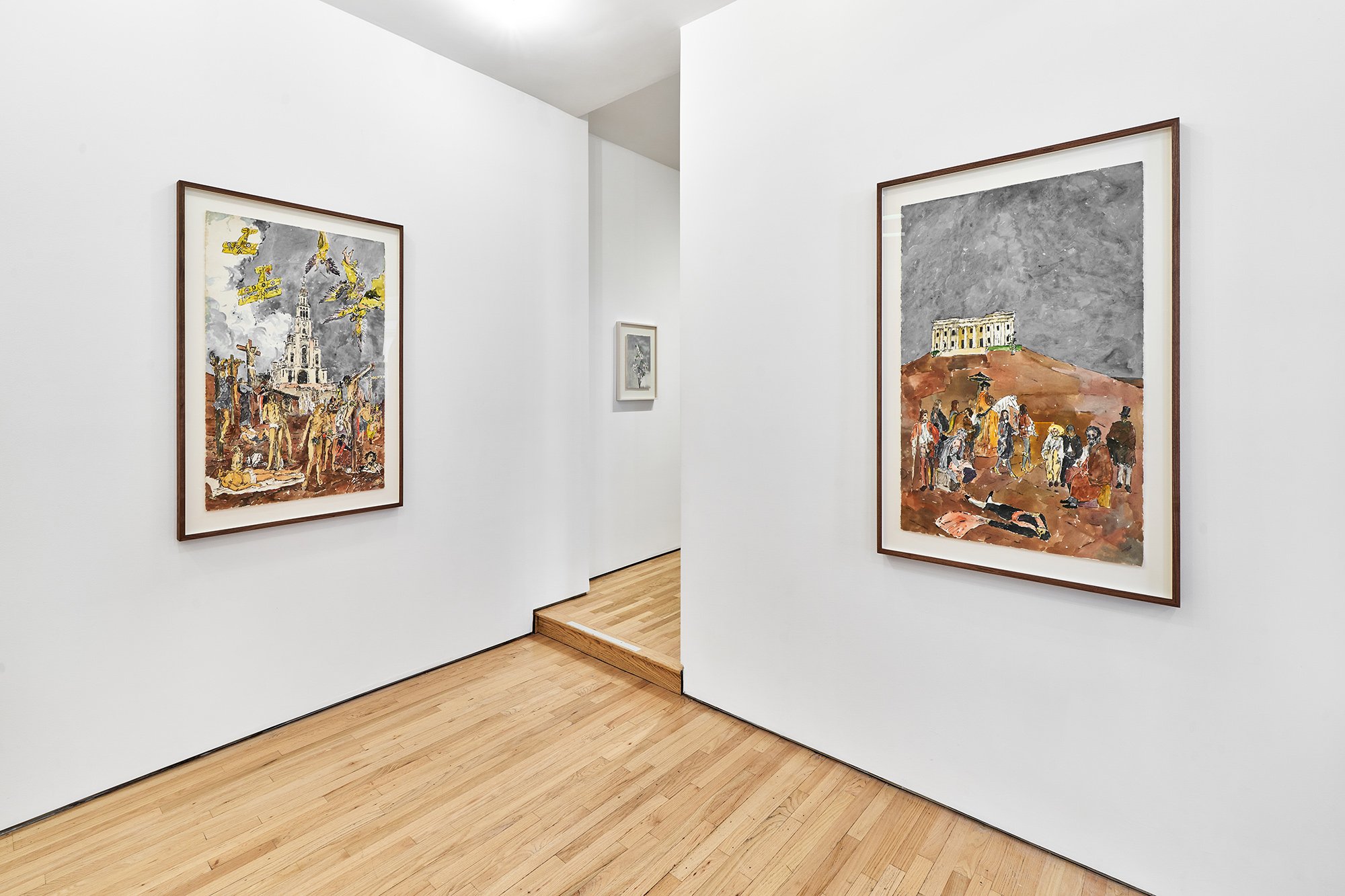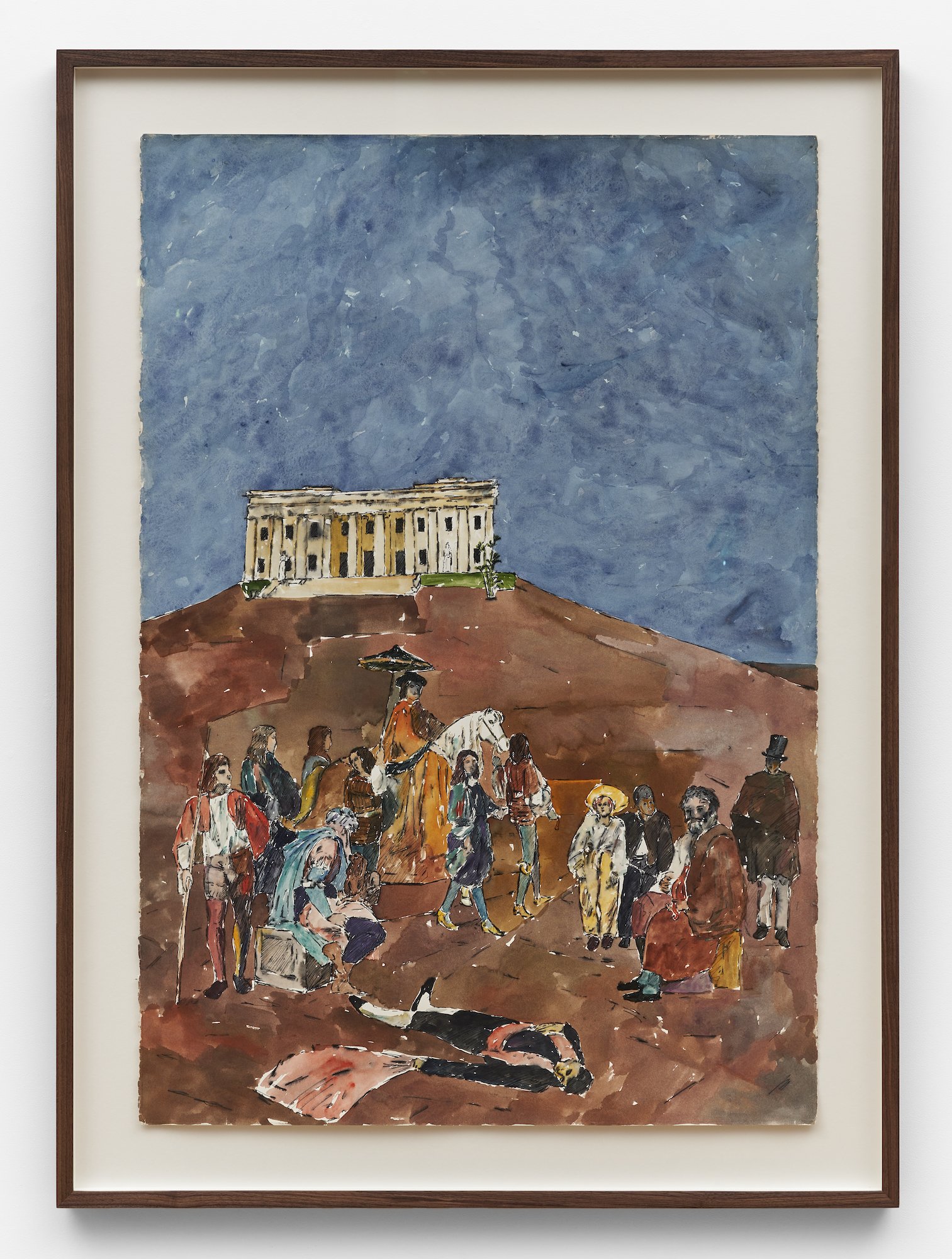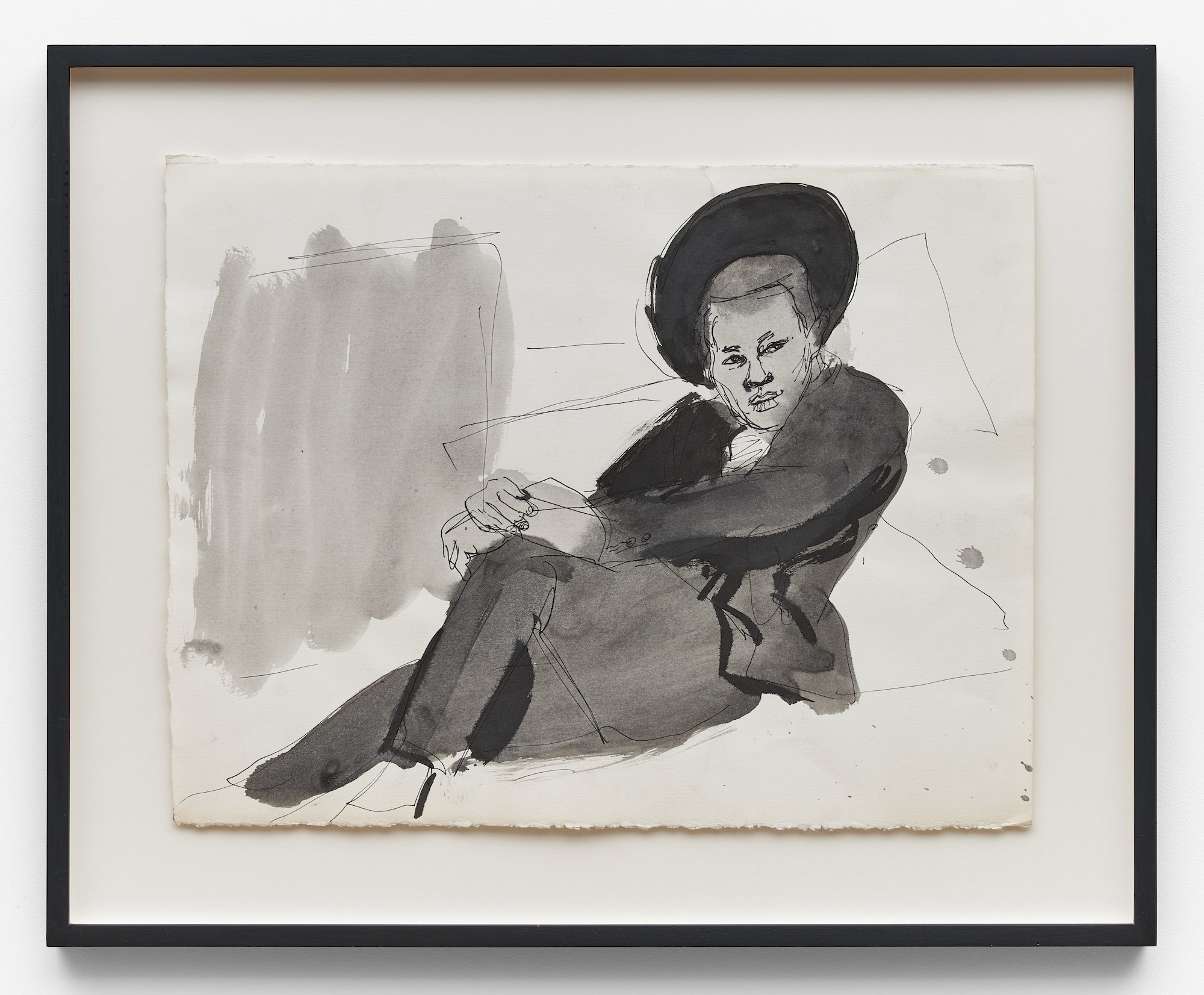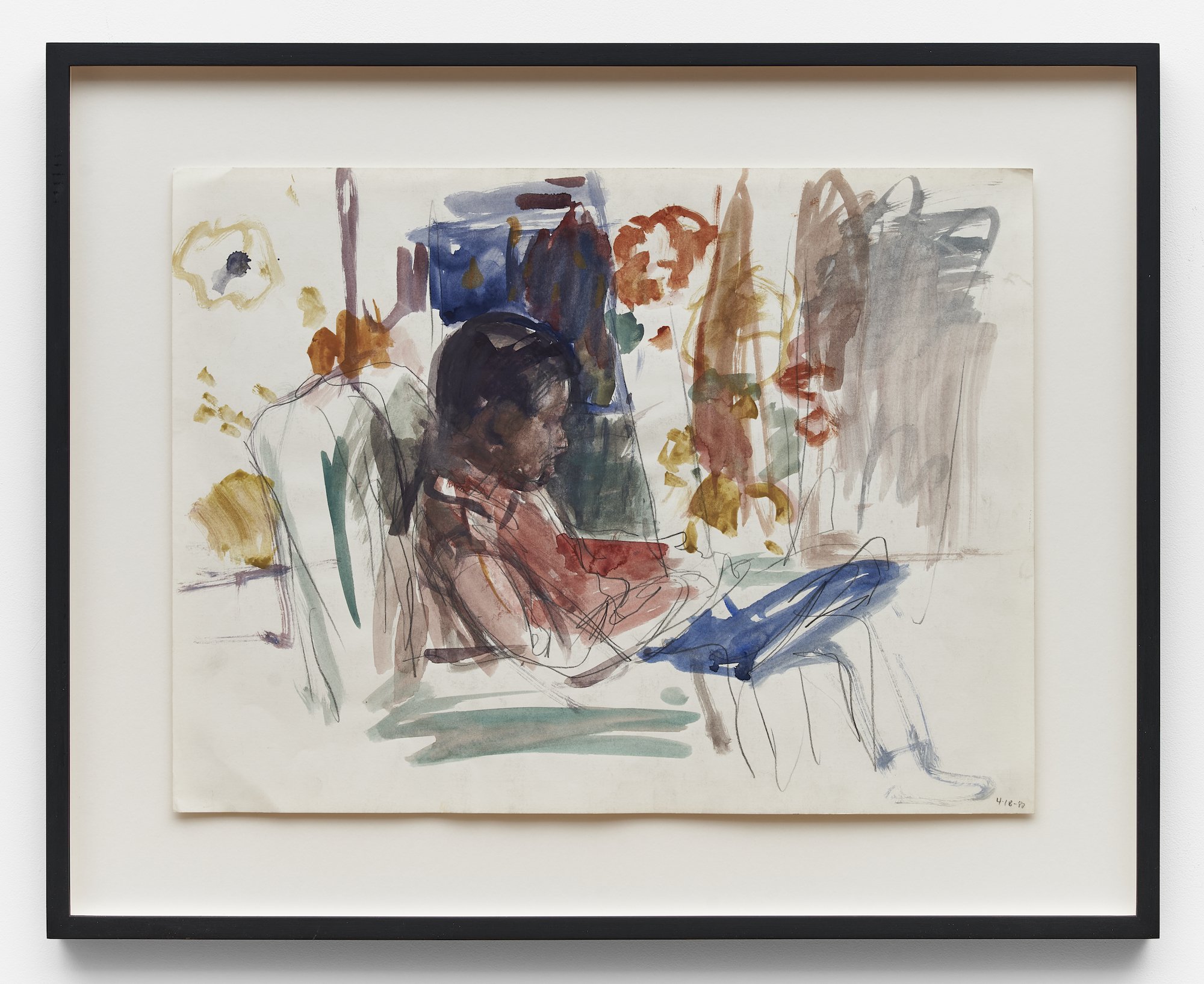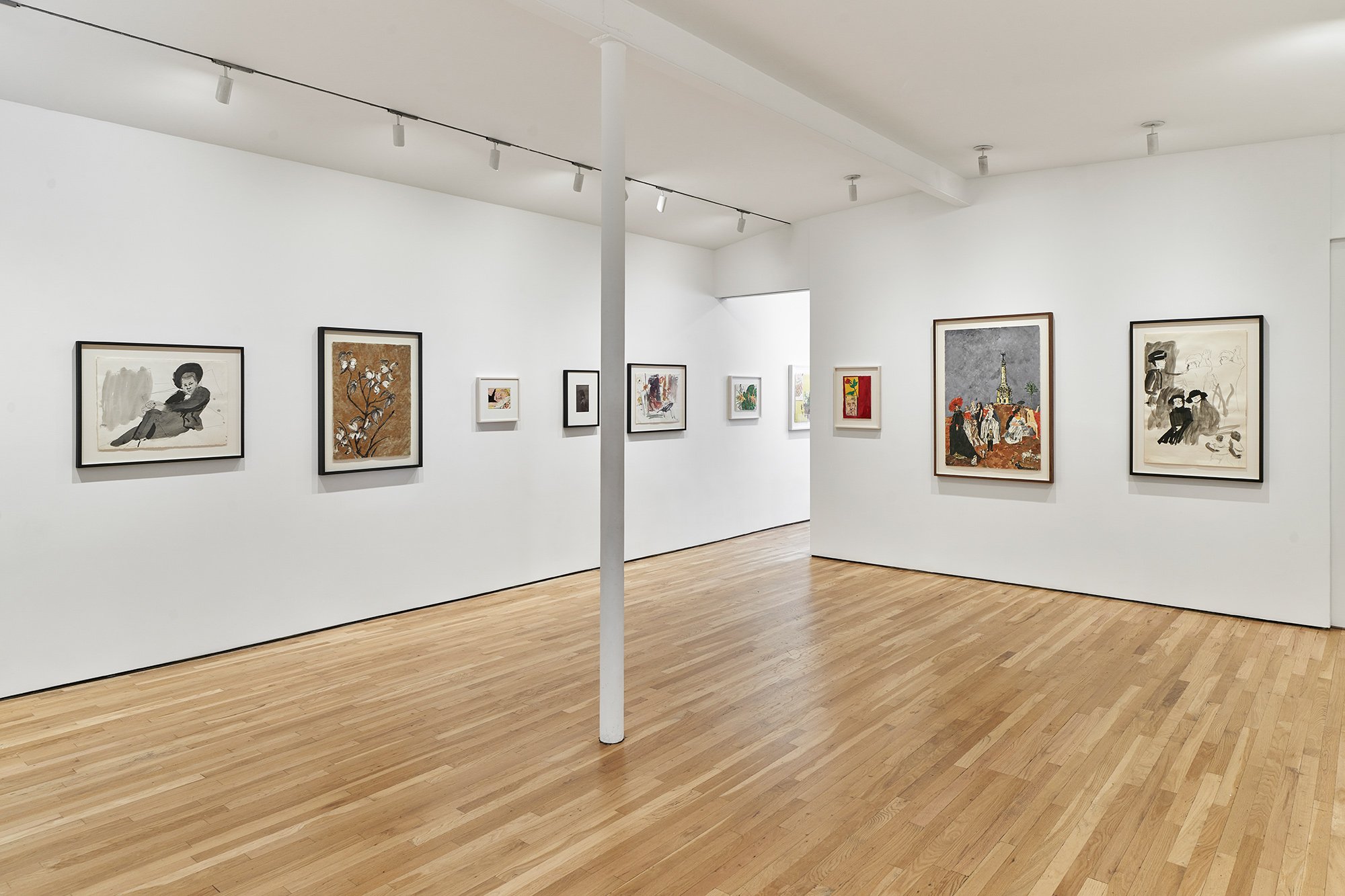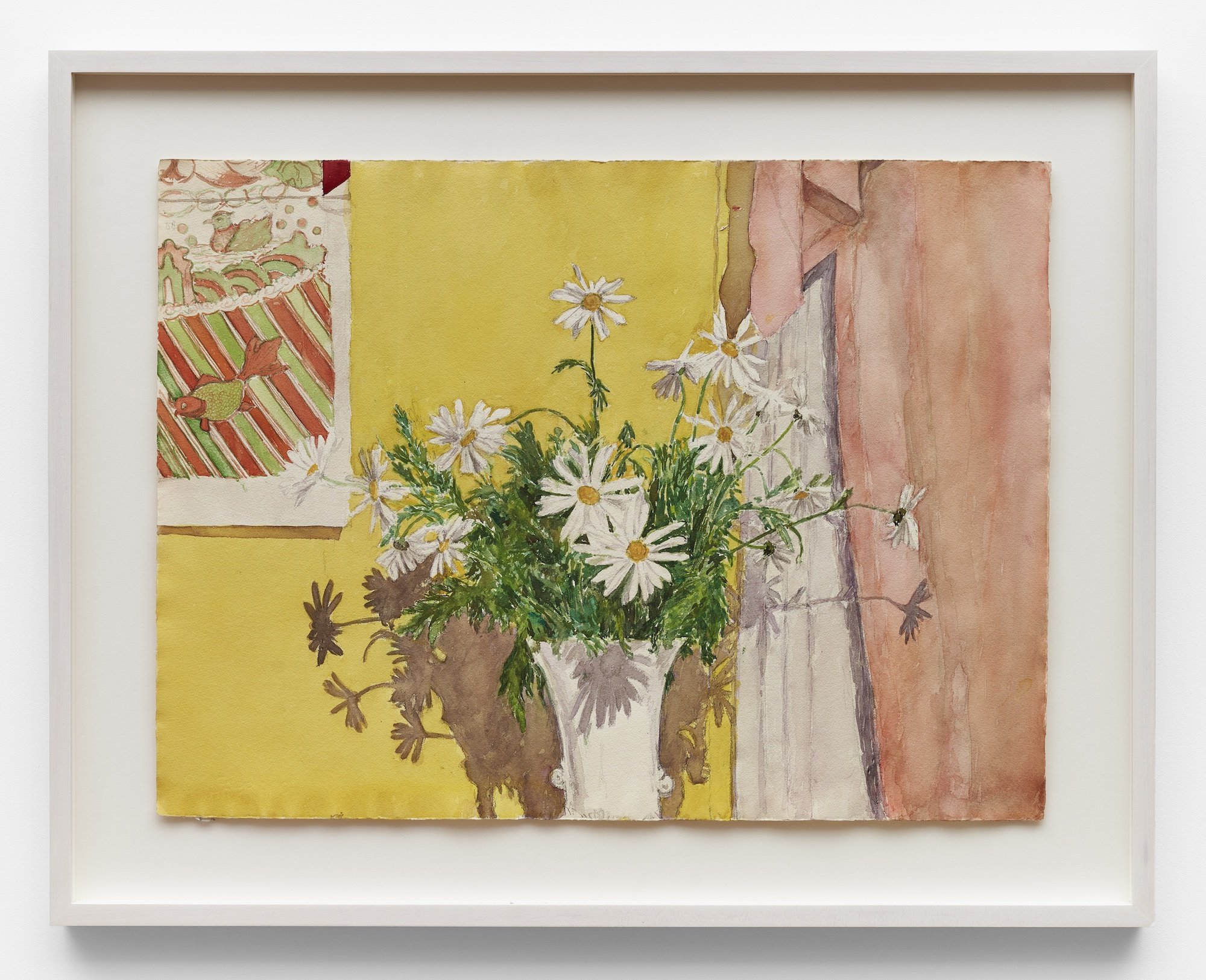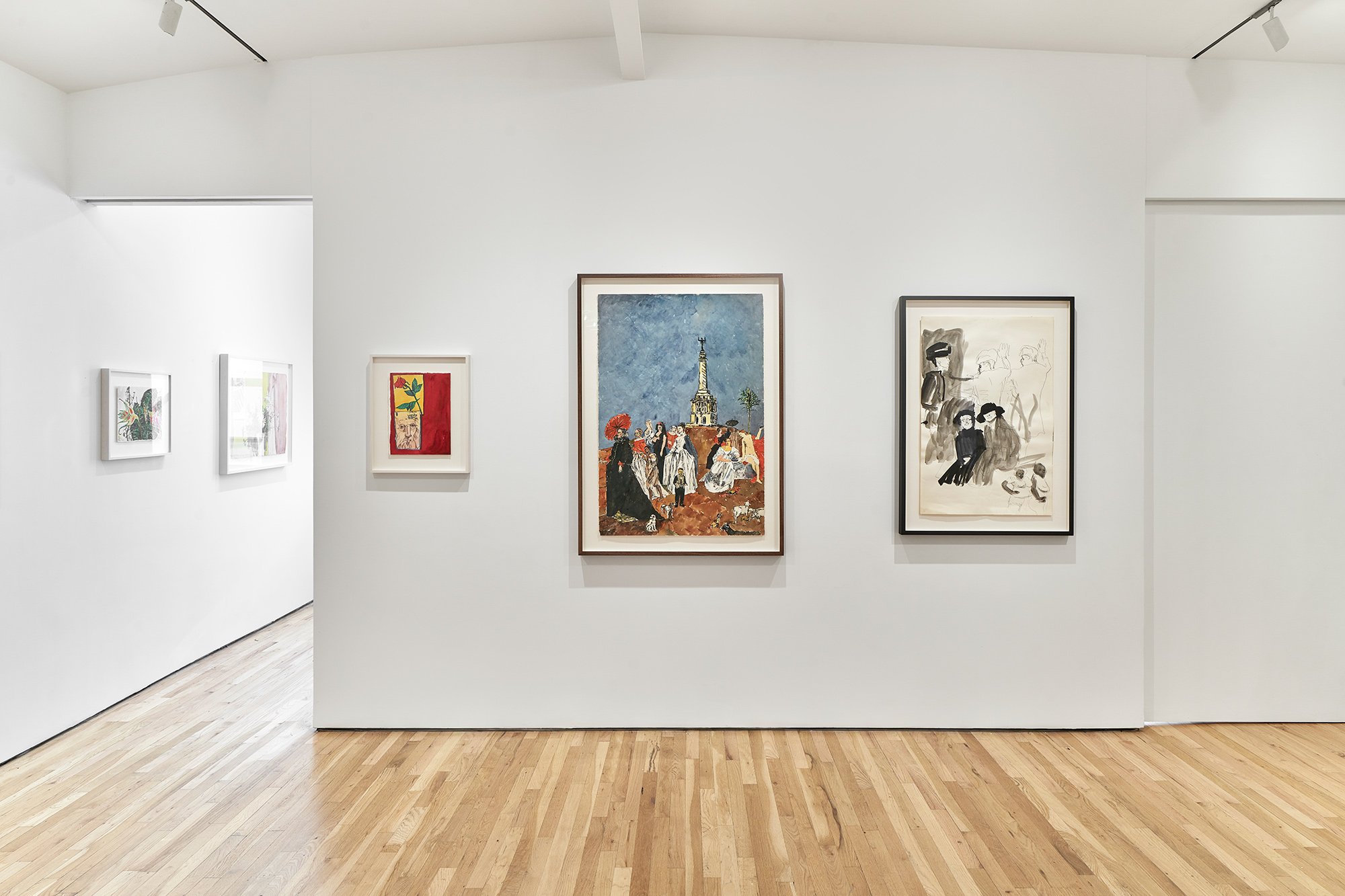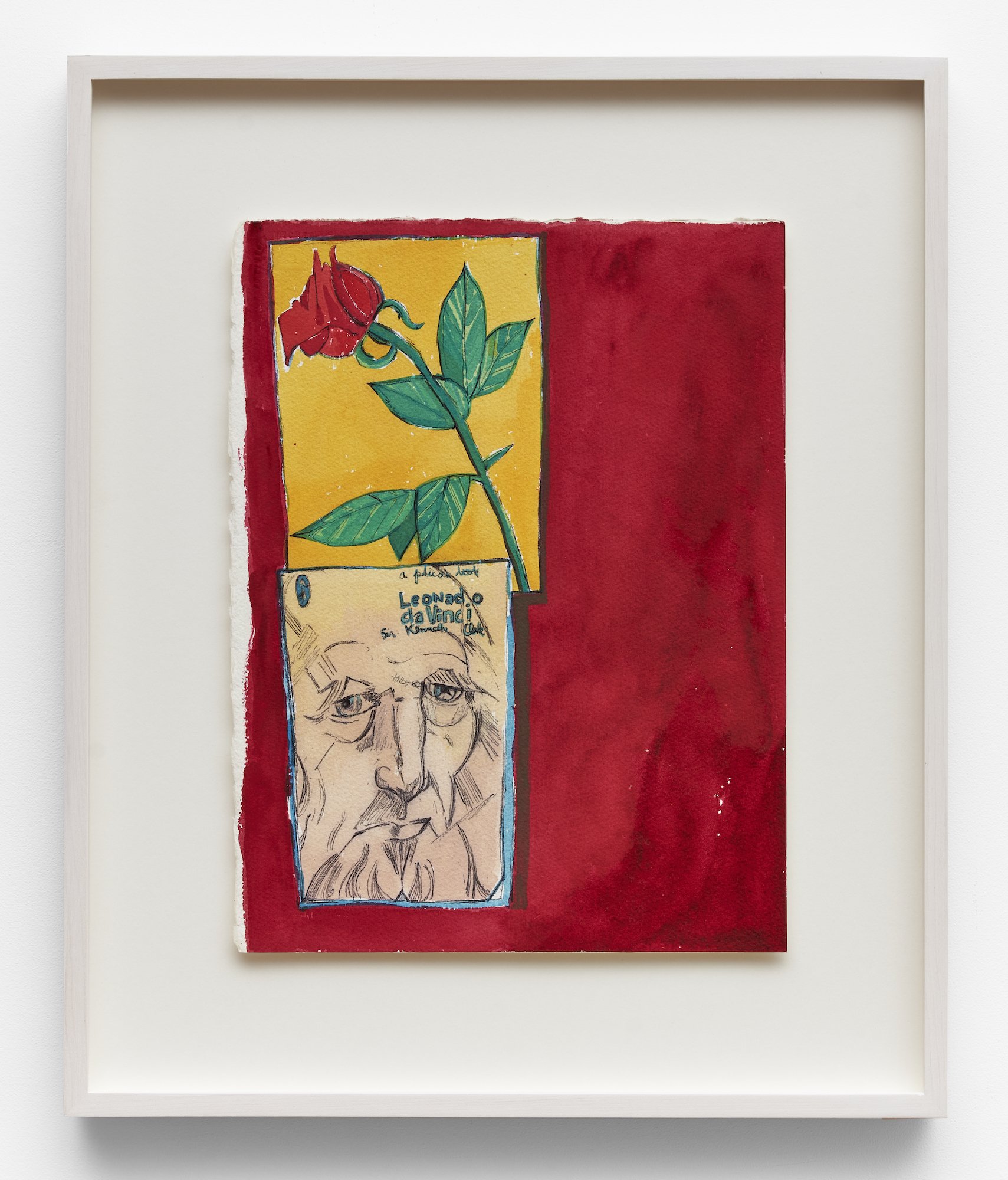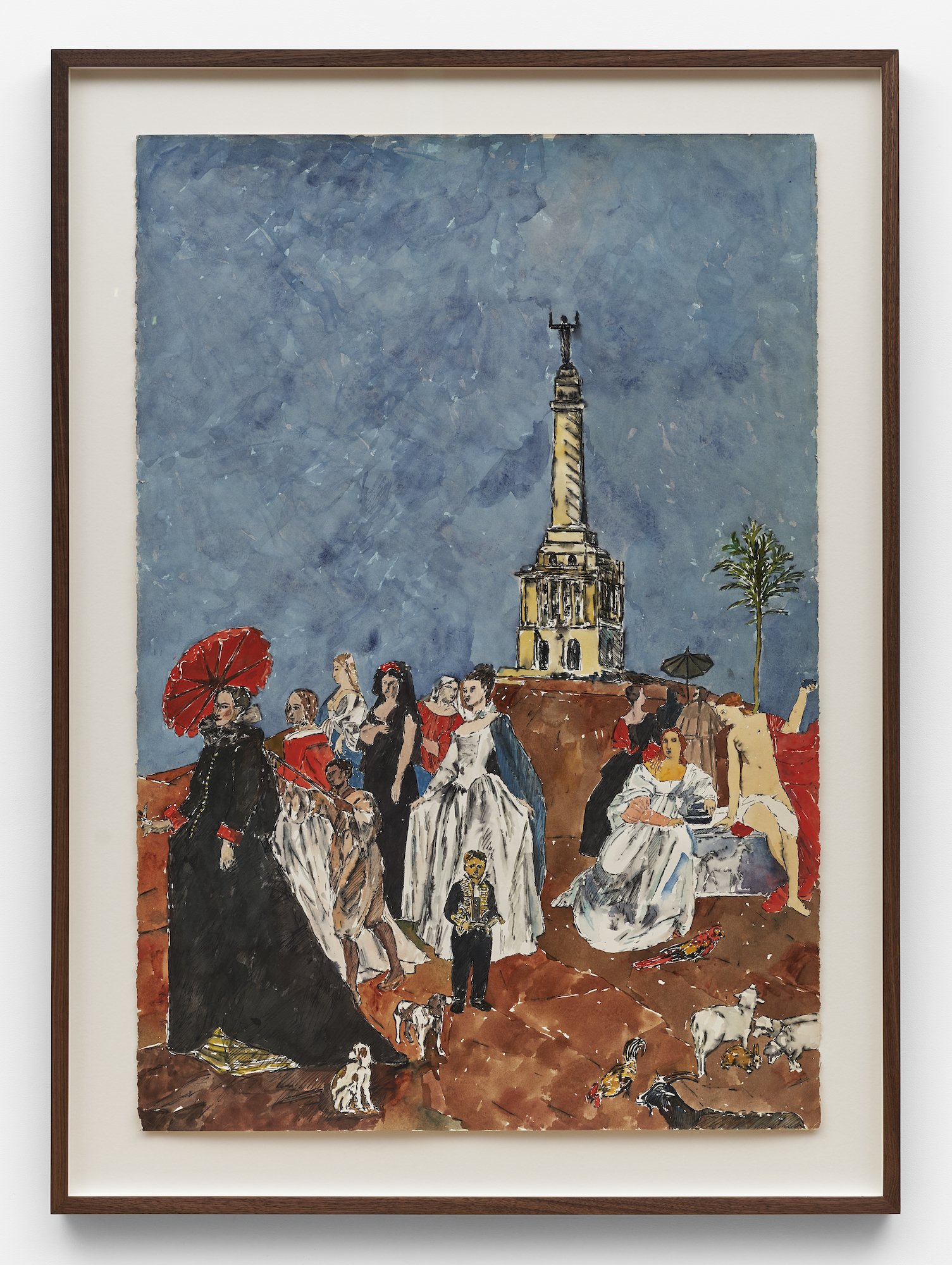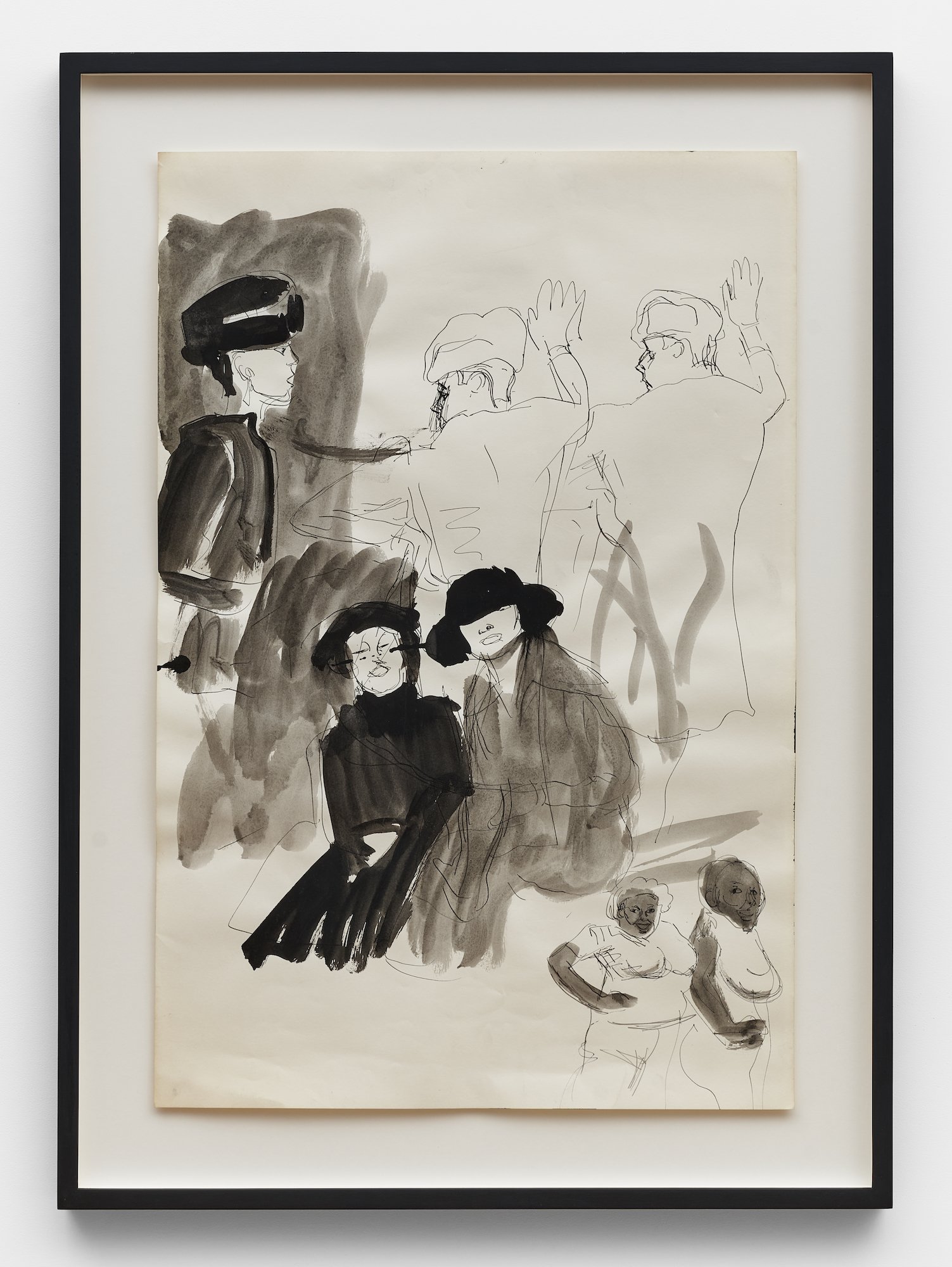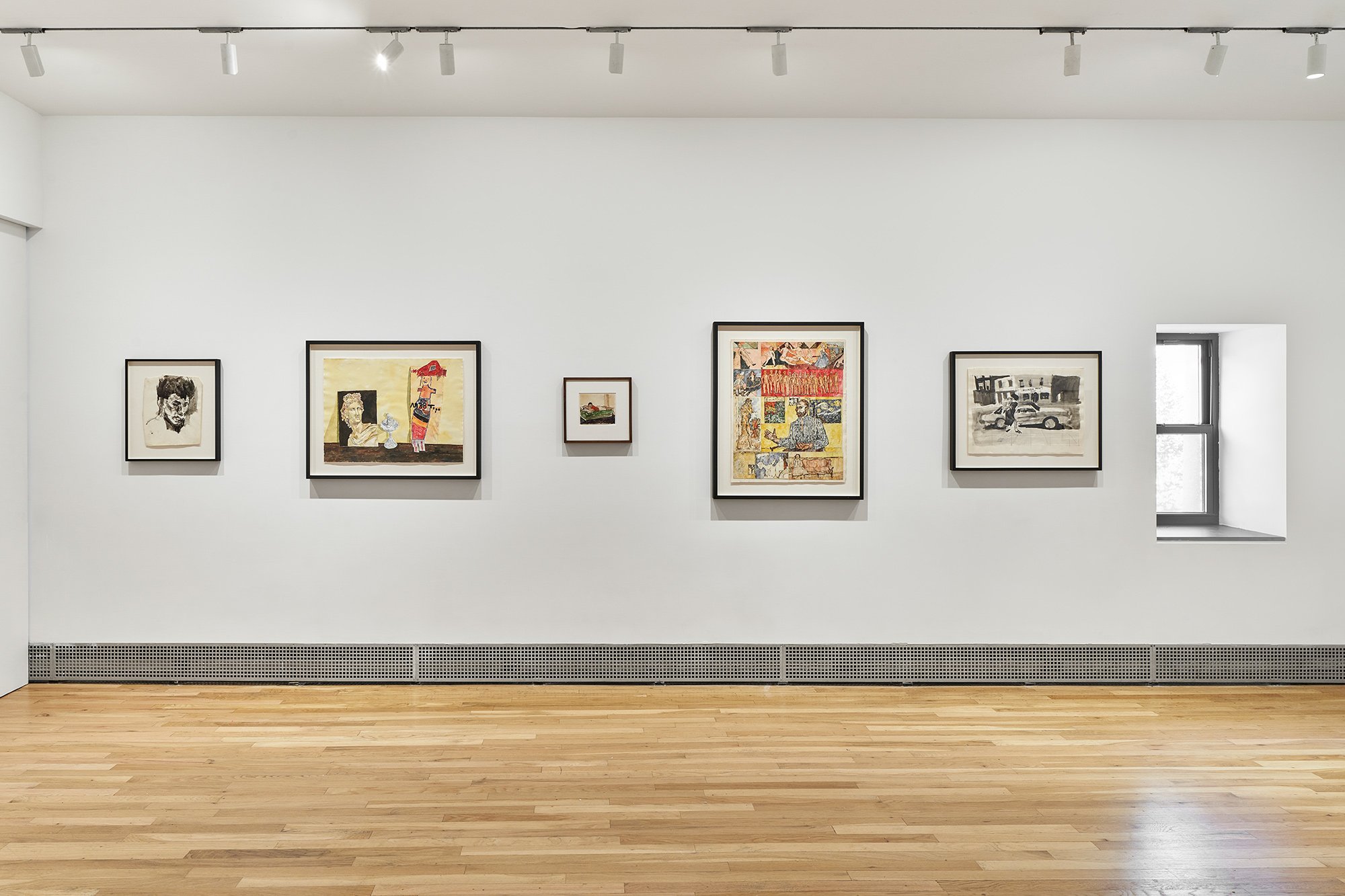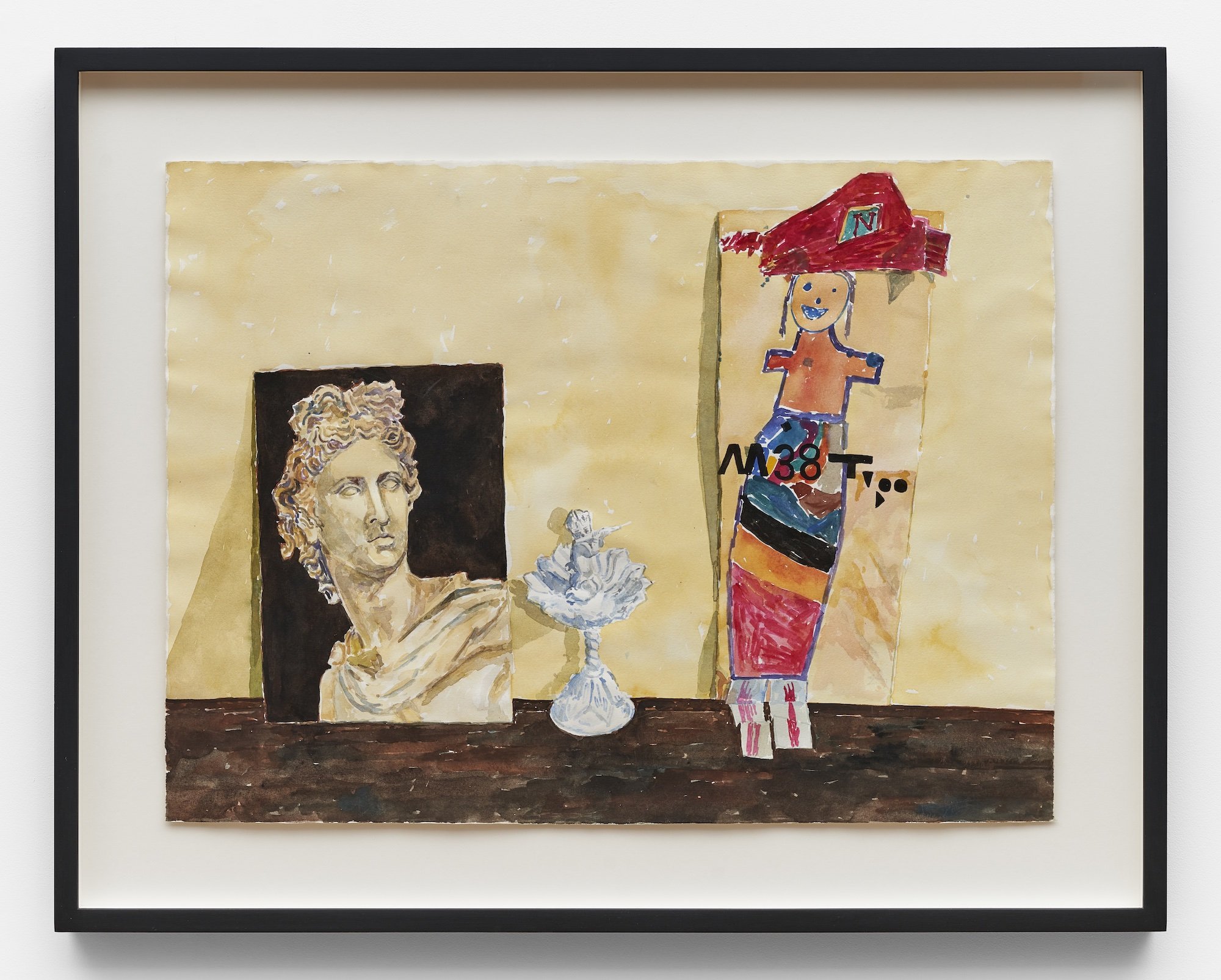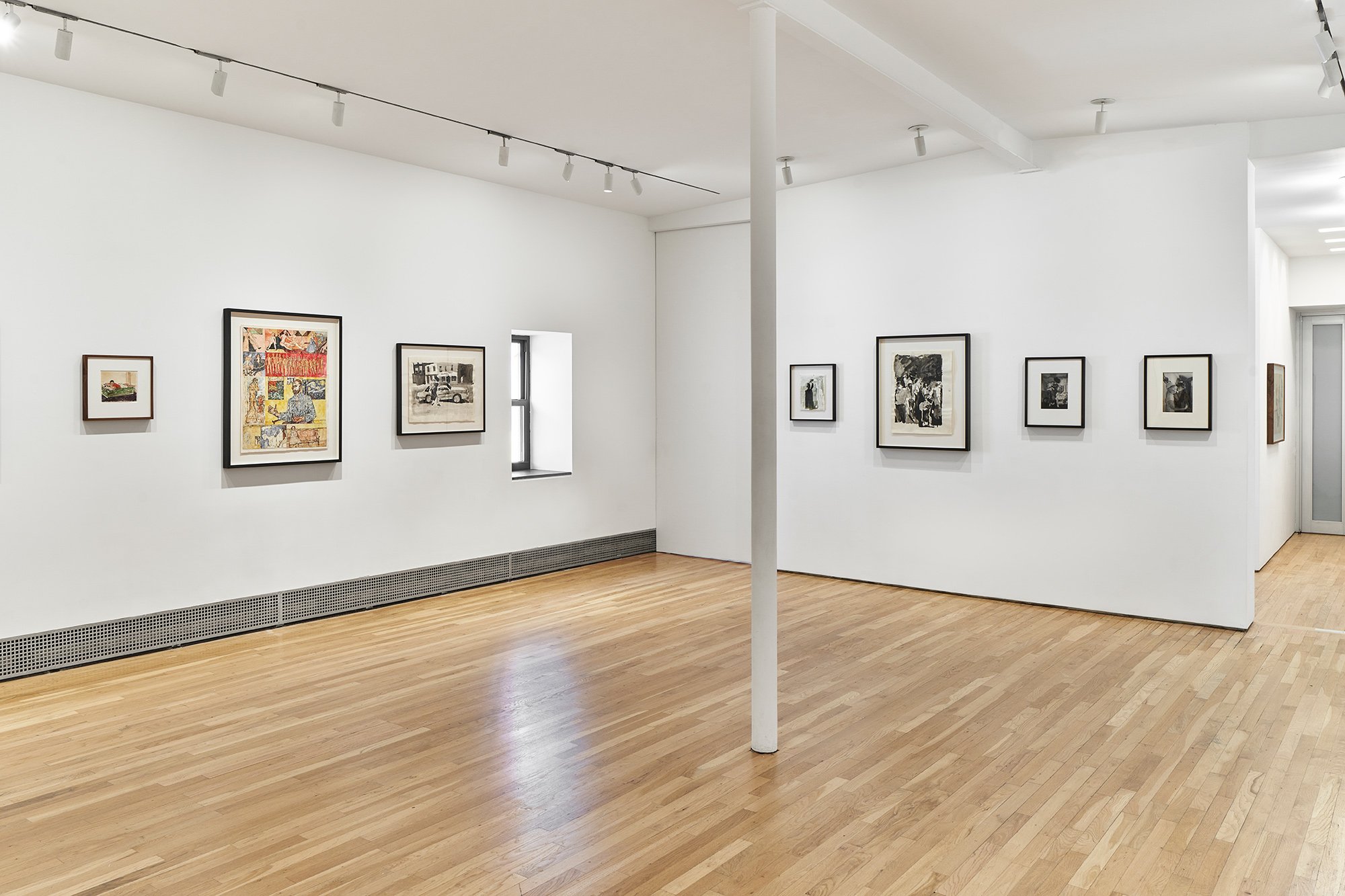Darrel Ellis and Miguel Ferrando
Darrel Ellis and Miguel Ferrando
September 5 – October 25, 2024
1 Rivington Street, New York
CANDICE MADEY is pleased to announce an exhibition that pairs work from the 1980s by Darrel Ellis and Miguel Ferrando, examining the artists’ lifelong friendship and shared artistic influences. Merging art historical themes with deeply personal and cultural narratives, Ellis and Ferrando were active figures in the downtown New York art scene of the 1980s and shared a feverish commitment to their work, which explored portraiture, still life, and landscape genres. Like many artists of their generation, both succumbed to AIDS; Ellis died in 1992, and Ferrando in 1996.
Ellis and Ferrando met as students at the the High School of Fashion Industries in Chelsea, where they shared a drawing teacher who regularly sent them to the Metropolitan Museum of Art to sketch from the old masters. They were both avid museumgoers, taking in a broad view of art history. Together they attended a precollege program at Cooper Union and engaged with the art scene from an early age.
Both Ellis and Ferrando were close to the artist Richard Brintzenhofe, whom Ferrando met and dated in his late teens. Brintzenhofe was the personal assistant to the British artist (and first Turner Prize–winner) Malcolm Morley, whom he introduced to Ellis and Ferrando. All three younger artists were impressed by Morley’s practice of making still-life paintings that included small objects, such as figurines, magazines, and postcards—constructing layers of discrete images within the picture frame. Morley also played with forms of atemporality in his work, juxtaposing chronologically disparate events within a single composition—an influence that can be read in both Ferrando’s and Ellis’s work.
Ferrando frequently referred to eighteenth- and nineteenth-century artists such as Goya, Velázquez, Cezanne, and Manet, anachronistically presenting art historical references alongside images of famous buildings in Santo Domingo in the Dominican Republic, where his family was from. Two of Ferrando’s most significant paintings in this series—My Father Likes It (Colonialism Monument: Iglesia Sagrado Corazón de Jesús, Moca, D.R.) and Untitled (Colonialism Monument: Palacio de Bellas Artes, Santo Domingo, D.R.) (both 1981–82), include a figure lying prone at the bottom of the composition, a dead matador lifted from a Manet painting from the 1860s, and a Crucifixion scene depicting Christ descended from the cross. Through his work, Ferrando challenged the notion of an objective or linear account of the past, intuiting instead a worldview that addressed the subjectivity of historical records and the recurrent nature of human affairs.
In 1984, Ellis created a series of Pietà-themed ink washes and drawings that—like Ferrando’s Colonialism Monument paintings—similarly depict a prone figure, albeit transposed to a modern-day urban street. This body of work represents a rare experiment with allegory in Ellis’s oeuvre. Ellis frequently worked from photographs, often by other photographers, but also—as shown here—by staging his own images. This exhibition presents three notable photos from a series that Ellis took of Ferrando with his boyfriend Todd Evan. Ferrando is in drag, posing as Mary and embracing Evan, a Christ-figure in a sailor cap, white T-shirt, and shorts. Ellis copied these figures into several important ink wash paintings (as in Pietà 1 and Pietà 3), presenting variations on the theme. In other images, Ferrando is a woman on the street, in front of a crowd scene, or hovering over a fallen male figure—a reference to Ellis’s own father, who was murdered by Bronx policemen after being arrested over a minor traffic dispute and subsequently hurled from a squad car onto the sidewalk, dying from the impact.
Both artists’ use of expressive autobiographical themes and references to cultural identity was largely out of step with dominant trends among their peers in the ’80s; however, both demonstrated unwavering commitment to their individual interests, pushing themselves in the studio to develop techniques and processes that were distinctively their own. Ellis and Ferrando left behind impressive bodies of work that are now are being reexamined (by organizations such as Visual AIDS, a younger generation of academics, and others) within a broader framework of artistic practices in the 1980s and ’90s.
DARREL ELLIS (b. Bronx, NY, 1958 – d. New York, NY, 1992)
Ellis was born in 1958 in the Bronx, NY. Recent solo exhibitions include Regeneration, a comprehensive survey that traveled to the Baltimore Museum of Art; Bronx Museum of the Arts, NY; Milwaukee Art Museum; and Columbia Museum of Art, SC (2022–24); Carpenter Center for the Visual Arts at Harvard University, Cambridge, MA (2023); Hannah Hoffman, Los Angeles (2023). His work is currently on view in Don't Forget to Call Your Mother at the Metropolitan Museum of Art, and What It Becomes at the Whitney Museum of American Art, both in New York. Shortly after Ellis’s death in 1992, a series of his photographs was featured in New Photography 8 at the Museum of Modern Art, New York; and in 1996, his friend Allen Frame organized a large-scale retrospective at Art in General, New York, that traveled to numerous institutions nationally.
His work is in the collections of the Art Institute of Chicago; Baltimore Museum of Art; Bronx Museum of the Arts; Brooklyn Museum; Harvard Art Museum, Cambridge, MA; Hammer Museum, Los Angeles; Los Angeles County Museum of Art; Metropolitan Museum of Art, New York; Museum of Modern Art, New York; Princeton University Art Museum, NJ; and Whitney Museum of American Art, New York, amongst others.
MIGUEL FERRANDO (b. Santo Domingo, DR, 1957 – d. New York, NY, 1996)
Ferrando was born in 1957 in Santo Domingo, Dominican Republic. Although he moved to New York at age five, Ferrando returned to Santo Domingo several times throughout his life and his diligent observations of the city and Dominican culture were integral to his artistic practice.Although it was cut short by his death at age thirty-eight, Ferrando’s practice was characterized by an unwavering dedication to his work, heedless of trends at the time. Ferrando lived off Delancey Street and was active in the nightlife of downtown New York, performing drag at the Pyramid Club on Avenue A. He was close friends with artists Richard Brintzenhofe, Darrel Ellis, Allen Frame, Malcolm Morley, and Ann Wilson. In 1990, Wilson organized a solo exhibition of Ferrando’s work at filmmaker and activist K. K. Kean’s loft at 161 Mulberry Street in New York.
Between 1973 and 1980, Ferrando studied at the Cooper Union for the Advancement of Science and Art, the Brooklyn Museum Art School, and with Guillo Pérez at the Escuela de Bellas Artes Santo Domingo. His work has been featured in group exhibitions at the Boston Center for the Arts; CANDICE MADEY, New York; Galerie Ziegler, Zurich; Cooper Union for the Advancement of Science and Art, New York; National Arts Club, New York; White Columns, New York; and Visual AIDS, New York. Luxe, Calme, Volupté, a group exhibition at CANDICE MADEY in 2023 marked the first exhibition of his work since 2000.
—


